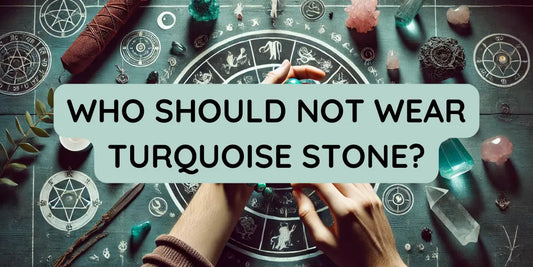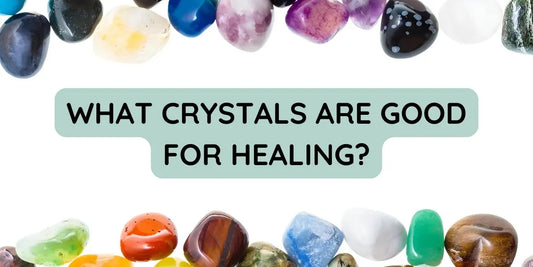The world of gemstones is filled with awe-inspiring colors and fascinating histories, and amethyst is no exception. Known for its stunning hues and powerful energy, amethyst has been cherished for centuries, particularly in the realm of lithotherapy. This semi-precious stone, celebrated for its rich purple tones, holds not only visual allure but also symbolic and metaphysical significance. But what exactly is the color of amethyst, and what does it mean?
In this article, we will dive into the captivating color spectrum of amethyst, explore its origins, variations, and its importance in lithotherapy, and answer the ultimate question: what color is amethyst?
Table of contents
The Signature Hue: What Defines Amethyst’s Color?
Variations in Amethyst Color: What Causes the Differences?
Amethyst in Lithotherapy: The Meaning Behind Its Color
Historical and Cultural Significance of Amethyst’s Color
Caring for Your Amethyst: Preserving Its Vibrant Color
Beyond Purple: Rare Amethyst Colors
Conclusion: The Everlasting Allure of Amethyst’s Color
The Signature Hue: What Defines Amethyst’s Color?

Amethyst is most commonly recognized by its purple color, ranging from delicate lilac to deep, royal purple. Its hue is attributed to the presence of iron and trace minerals within the quartz structure, which undergo radiation over geological time.
- Vivid Purple: High-quality amethyst boasts an intense, vibrant purple that is evenly distributed. This shade is the most sought after in jewelry and is often referred to as "Siberian Amethyst" in the trade.
- Lavender or Lilac: Paler varieties of amethyst exhibit softer, pastel tones. These stones are valued for their subtlety and often appeal to those seeking a more understated look.
- Deep Purple with Red Flashes: Some amethysts feature deep purples accented by red or blue undertones. This combination enhances the stone’s brilliance and makes it a favorite among collectors.

The Role of Light in Amethyst’s Color
Amethyst's color can appear to change under different lighting conditions. In daylight, its natural purple tones are most vivid. Under artificial light, particularly incandescent bulbs, the stone might exhibit warmer, reddish hues. This phenomenon, known as pleochroism, adds to its mystique.
Variations in Amethyst Color: What Causes the Differences?

While amethyst is typically associated with shades of purple, its color can vary significantly due to several factors:
-
Geographical Origin:
- Brazilian Amethyst: Often lighter in color, ranging from pale lavender to medium purple.
- Uruguayan Amethyst: Known for its deep, saturated purple with a hint of blue.
- Zambian Amethyst: Exhibits a darker hue, often with red flashes that intensify its depth.
-
Heat Treatment: Heat exposure can alter the color of amethyst. When heated to high temperatures, it may lose its purple hue and transform into yellow, orange, or green quartz varieties, such as citrine or prasiolite.
-
Inclusions and Impurities: Tiny inclusions within the crystal structure can affect the stone’s overall appearance. For instance, certain amethysts might display a zoned pattern with alternating light and dark areas.
Amethyst in Lithotherapy: The Meaning Behind Its Color
In lithotherapy, amethyst is renowned for its spiritual and healing properties. Its purple hue is not just a visual feature but a symbolic representation of its metaphysical significance.

Purple: The Color of Spirituality and Transformation
The color purple has long been associated with royalty, wisdom, and spirituality. In lithotherapy, amethyst's purple tones resonate with the crown chakra, the energy center linked to higher consciousness and enlightenment.
- Healing Properties: Amethyst is believed to calm the mind, reduce stress, and enhance mental clarity. Its tranquil purple hue is thought to help balance emotions and foster a sense of inner peace.
- Protection and Purification: The stone’s deep, rich purple is symbolic of protection, shielding its wearer from negative energies and promoting spiritual growth.
- Creativity and Intuition: Amethyst’s softer lavender tones are said to stimulate creativity and intuition, making it a favorite among artists and thinkers.
Historical and Cultural Significance of Amethyst’s Color

Amethyst’s purple color has held symbolic importance across various cultures and historical periods:
-
Ancient Greece and Rome: The name “amethyst” comes from the Greek word “amethystos,” meaning “not intoxicated.” Ancient Greeks believed the stone’s purple hue could prevent drunkenness, and they often crafted drinking vessels from amethyst.
-
Medieval Europe: During the Middle Ages, amethyst was considered a symbol of piety and chastity. Its regal color made it a favorite among clergy members, often adorning religious artifacts.
-
Modern Symbolism: Today, the stone's purple tones are associated with mindfulness, meditation, and emotional balance, making it a staple in holistic practices like yoga and energy healing.
Caring for Your Amethyst: Preserving Its Vibrant Color

To maintain the vibrancy of your amethyst, proper care is essential. Its purple hues can fade when exposed to excessive heat or prolonged sunlight. Here are some tips to keep your amethyst looking its best:
- Avoid Direct Sunlight: Store your amethyst in a cool, dark place to prevent fading.
- Clean Gently: Use mild soap and lukewarm water for cleaning. Avoid harsh chemicals that might damage the stone.
- Protect from Scratches: While amethyst is relatively hard (7 on the Mohs scale), it can still be scratched by harder materials.

Beyond Purple: Rare Amethyst Colors
While purple is the defining color of amethyst, rare and unique variations exist:
-
Green Amethyst (Prasiolite): A rare form of quartz that turns green due to heat treatment or natural geological processes.
-
Amethyst-Citrine (Ametrine): A unique gemstone displaying both purple and yellow hues, often found in Bolivia.
-
Pink Amethyst: A softer, pale pink variety discovered in recent years, gaining popularity for its gentle energy and aesthetic appeal.
Conclusion: The Everlasting Allure of Amethyst’s Color
The question “what color is amethyst?” unveils a spectrum of answers, each as fascinating as the stone itself. From its classic royal purple to delicate lilac and rare bi-color forms, amethyst’s hues are as diverse as its cultural and spiritual significance.
In lithotherapy, amethyst’s purple tones embody tranquility, wisdom, and protection, making it a cherished stone for holistic healing and personal growth. Whether you’re drawn to its vibrant energy or its historical allure, amethyst’s color is a timeless celebration of nature’s artistry.
If you're looking to explore the world of amethyst further, consider incorporating this stunning gemstone into your daily life, be it as jewelry, home décor, or a companion in your spiritual journey. Its color alone is enough to inspire awe, and its energy promises to enrich your life in countless ways.

























